Hakaru Mori demonstrating at the 50th Anniversary of Sokaku Takeda’s passing
Daito-ryu Aiki-jujutsu Takumakai (大東流合気柔術琢磨会) General Director Hakaru Mori (森恕) began studying with Takuma Hisa in 1962. Mori sensei was instrumental in founding the Takumakai organization, something which Takuma Hisa himself initially opposed, and was eventually designated as the General Director (総務長 – the same title that was held at one time by Sokaku Takeda himself) of the Takumakai by Takuma Hisa.
This article is the English translation of an article in Japanese written by Hakaru Mori. It originally appeared in issues number 68 and 69 of the Takumakai Newsletter.
In this article there is some mention of the “Soden”, a large collection of photographs in nine volumes collected by the students at Takuma Hisa’s Asahi Newspaper dojo depicting the techniques taught to them by both Morihei Ueshiba and Takuma Hisa. Since this type of photography was unusual among traditional arts at the time this involved some small amount of misdirection on the part of Takuma Hisa and his students. According to Hakaru Mori (Aiki News #89, July 1989):
I understand that Hisa Sensei would take Ueshiba Sensei or Sokaku Sensei for a bath after practice and wash their backs. During that time, his students would perform the techniques they learned that day and take photos. Today it is not very difficult to take photos, but in those days it wasn’t easy and it was only possible because of the Asahi Newspaper Company. There are more than 1,500 photos all together.
You may also be interested in Hakaru Mori’s article “The Aiki of Tenouchi“.
Daito-ryu Aiki-jujutsu Takumakai Founder Takuma HIsa in his 40’s
Hakaru Mori on Kakete and Aiki no Jutsu
(by Hakaru Mori, translated by Christopher Li)
From issues 68 and 69 of the Takumakai Newsletter (琢磨会会報)
“Kakete” (掛手) is, when facing an opponent in combat, a technique that is applied to an opponent preemptively without waiting for an attack.
The converse of this situation is called “Ukete” (受手), in which technique is initiated after receiving an opponent’s attack. Most Daito-ryu technique are Ukete. Normally, Kakete is first taught only after one has significantly high rank.
For that reason, even among Takumakai members there are more than a few people who are unaware that Kakete exists in Daito-ryu.
I have always had an interest in the existence of Kakete in Daito-ryu, and in the content of those techniques. At each opportunity I have continued to research and practice these techniques.
What has held the most interest for me is Aiki in Kakete, whether Aiki techniques can exist in Aiki, and if they exist what kind of techniques they might be.
Why have I had such an interest? Originally, the principles and techniques of Aiki were all created from Ukete, and I was somewhat sceptical that those kinds of principles and techniques could be applied in the case of Kakete, where the position is so diametrically opposed.
For example, in the Takumakai the familiar wrist grabbing techniques such as “Aiki-age” and “Kate-dori/Ryote-dori Aiki-nage” are one example of Aiki techniques that are taught from the beginning levels. These techniques all begin after receiving an attack (in this case an attack grabbing one’s forearm) from the opponent, in a classic example of Ukete Aiki techniques.
These Aiki techniques are applied by using the grasping attack of the opponent to one’s forearm in reverse. Put another way, if the grasping attack of the opponent is not there then the technique cannot be applied.
However, Kakete techniques are, basically speaking, applied at the stage in which the opponent’s attack has not yet occurred, applied pre-emptively without waiting for the opponent’s attack.
Therefore, when applying such techniques there is no way of utilizing the opponent’s method of attack. From the beginning the technique has no relation to the attack of the opponent, and must function independently as an Aiki technique.
I have had a continuing interest in what, specifically, these techniques were, and how they differ from the better known Ukete Aiki techniques.
A page from the Soden (総伝) – a standing kata-dori irimi technique
Upon investigation, we can see that in the Takumakai many techniques using this Kakete technical method have been transmitted in the practical technique section of the Soden collection of photographs.
In the nine volumes of the complete Soden set of photographs alone there are some fifty-plus techniques, approximately ten percent of the total 547 technical methods noted.
If one picks out the Kakete from the practical techniques taught by Hisa sensei and adds them to this number then it can be thought that the total number of Kakete transmitted to the Takumakai easily surpasses one-hundred.
That there are this many Kakete may come as quite a surprise to those who believe that there are no Kakete in Daito-ryu, that in Daito-ryu technique begins after receiving an attack from the opponent, that all techniques are Ukete.
However, Daito-ryu Aiki-jujutsu is absolutely a Sogo Bujutsu (*a broad based, integrated, composite military system), not simply a method of manipulating a person’s body, so this large number of Kakete should come as no surprise. Rather, it would be odd if they did not exist.
Now I would like to discuss what kind of Aiki techniques can be applied when performing Kakete techniques.
“Kakete” (掛手) is, when facing an opponent in combat, a technique that is applied to an opponent pre-emptively without waiting an attack.
The reverse of this situation is called “Ukete”. In that case one waits to receive the attack of the opponent before first beginning to perform a technique. Unlike Kakete, those techniques do not involve initiating an attack against the opponent. First, one defends against the opponent’s attack, and then attacks the opponent only once one’s safety is assured. Since these attacks are constructed so that one must always counter-attack after defending against the attack of the opponent, one must always utilize the attacking method of the opponent.
In other words, since those techniques are composed of a combination of the defence and the attack, the movements are several times more complex then Kakete techniques.
The majority of Daito-ryu technique is composed of these Ukete techniques.
However, upon investigation we find that many Kakete techniques have been transmitted in the Takumakai in addition to these types of Ukete techniques.
From volume one of the Soden (総伝)
Many of those are to be found in the techniques taught to us by Takuma sensei, and in the Soden collection of photographs composed of techniques taught by both Takeda sensei and Ueshiba sensei. Kakete techniques make up approximately ten percent of the total techniques in that collection.
What we can say here is that the techniques of Daito-ryu are composed of the two great channels of these techniques, the ninety percent of the Ukete technique contrasted against the ten percent of the Kakete techniques, and within the techniques of Daito-ryu Kakete techniques occupy an extremely important place.
Also, that Daito-ryu’s three major systems of technical methods – joint, vital point and Aiki, are utilized in the case of both Kakete and Ukete, and the technical principals and methods are essentially the same in both.
In other words, as far as their construction, Ukete techniques can be be used as Kakete techniques without modification.
It is only Aiki techniques that are an exception.
Fundamentally, there are two iron rules in Aiki techniques – (1) no power is used when applying the technique and (2) in order to apply the technique one does not grasp the hand or clothing of the opponent.
Whether in the case of either Ukete or Kakete, for Aiki techniques one must strictly adhere to these iron rules.
For example, in classic examples of Ukete Aiki techniques such as Katate-dori Aiki-nage or Ryote-dori Aiki-age, the opponent’s method of attack (in this case an attack grabbing one’s forearm) is used to enable the application of Aiki in the counter-attack, and although the technique may be difficult, one can adhere to the iron rules of Aiki technique.
However, for Kakete Aiki techniques, which preemptively apply technique when the chance arises at a stage in which the opponent has not yet begun any kind of attack, the attacking method which is utilized above has not yet come into existence.
In this condition, if one attempts to manipulate the opponent’s body softly, one cannot help but violate the second iron rule (in order to apply the technique one does not grasp the hand or clothing of the opponent).
At that instant, although that technique may be Kakete, it is no longer an Aiki technique.
I spent much time researching through the Soden, training and refining, and have been able to grasp a number of Aiki techniques.
Specifically, Fure-Aiki (触れ合気 / “touch Aiki”), Kyokushi-no-Aiki (曲支の合気 / “bent support Aiki”) and Nokase-Aiki (載せ合気 / “loading Aiki”), these have already been made public to some extent.
It is my belief that these Kakete Aiki techniques touch the essence of Aiki, and that those technical principles and techniques hold a place at the height of the secrets of Aiki-no-Jutsu.

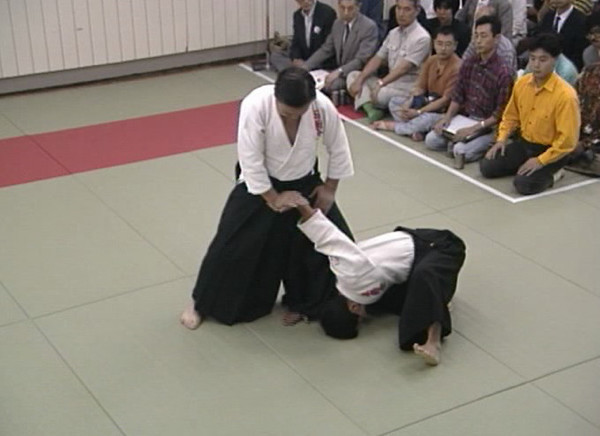
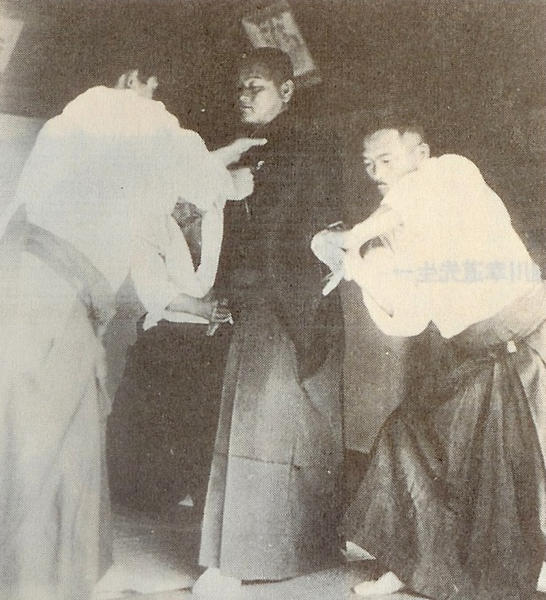
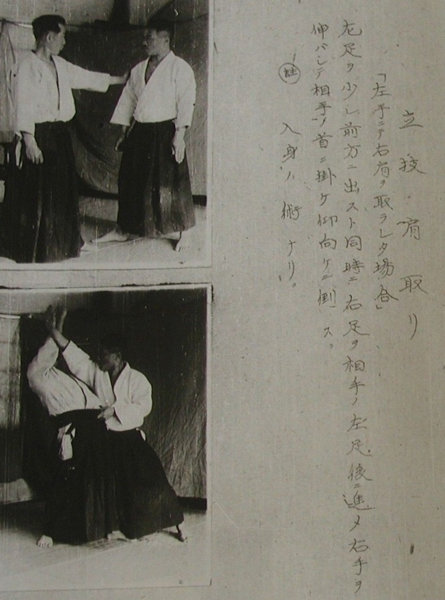
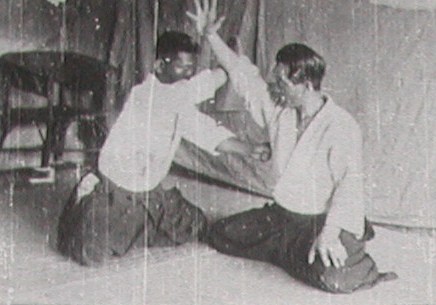
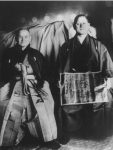
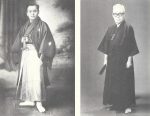
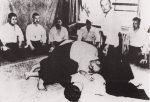

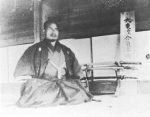

Leave a Reply